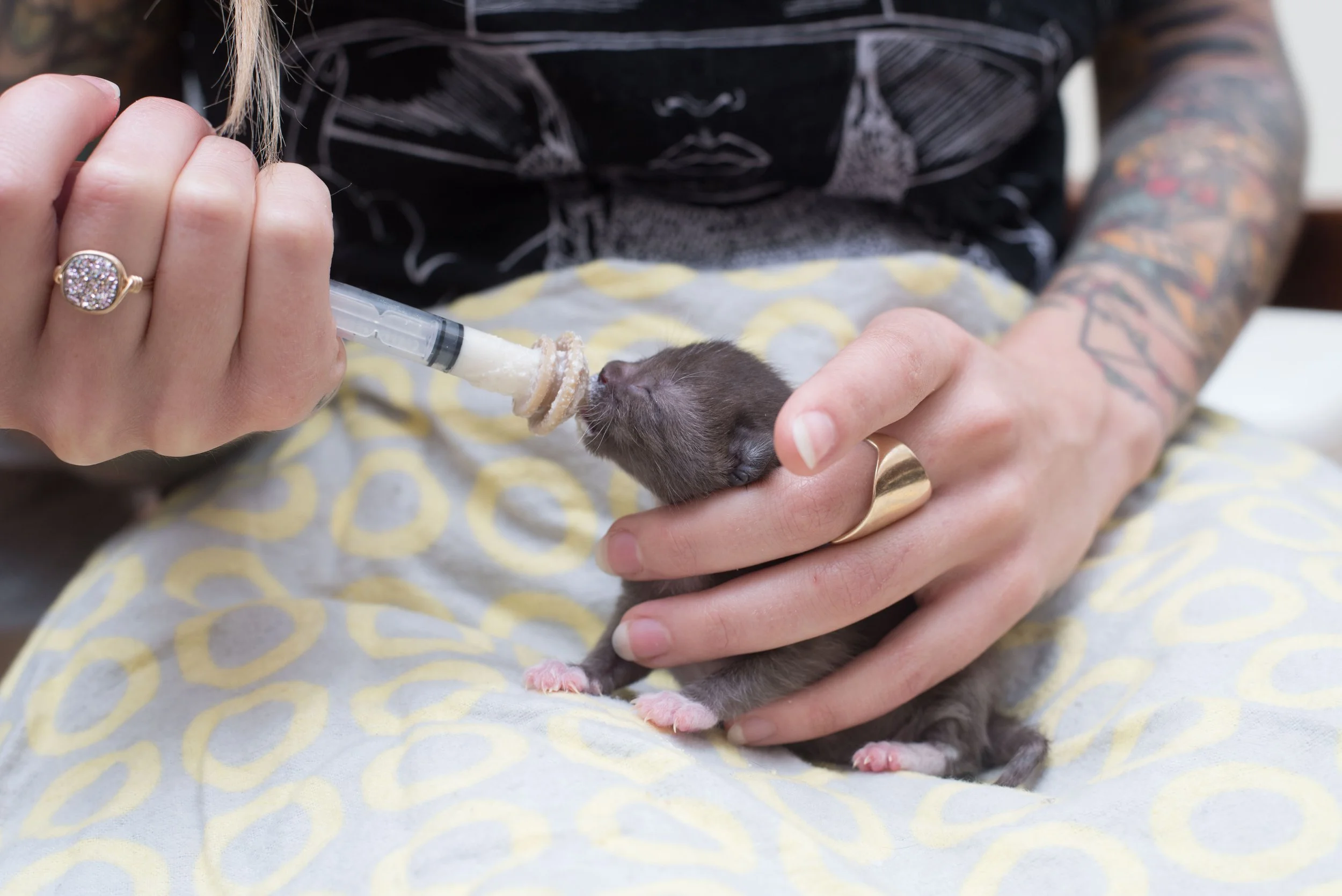How to Give Subcutaneous Fluids to a Young Kitten
When caring for a dehydrated kitten, subcutaneous fluid therapy is an excellent tool to have in your toolkit. Talk to your veterinarian about hands-on training!
What Are Subcutaneous Fluids?
Subcutaneous fluids are fluids given under the skin to help provide additional hydration to an animal. The fluid is slowly absorbed by the body and plays an important role in supportive care for kittens struggling with a variety of health concerns. A veterinarian can give you a prescription, as well as hands-on training.
How Do You Know if a Kitten Needs Fluids?
Kittens who are struggling with mild or moderate dehydration will benefit from subcutaneous fluids. Dehydration is unfortunately quite common in young kittens, as there are many common health conditions in kittens that can cause fluid loss. Some situations in which fluids should be considered include:
Diarrhea - kittens with diarrhea are losing lots of fluids, and require additional hydration while being treated
Constipation - hydration is a necessity for helping kittens with constipation, especially if the kitten is on laxative drugs which can be dehydrating
Vomiting - nausea and vomiting are extremely dehydrating, and these kittens will need fluid support while being treated
Fever - kittens with hyperthermia or temperatures above 102.5°F often become dehydrated and may benefit from room temperature fluids
Inappetence - if a kitten is failing to take in enough fluid through eating and drinking, fluid therapy may be necessary
Panleukopenia - kittens with this life-threatening virus will typically require subcutaneous fluids as part of their recovery plan
Concentrated urine - if a kitten’s urine is bright or dark yellow, it might be a sign that they need some additional fluid support
If you’re not sure whether a kitten needs subcutaneous fluids, talk to a veterinarian about their specific symptoms in order to develop a treatment plan for his or her unique case.
Supplies Needed
Lactated Ringer’s Injection - requires a prescription from your veterinarian; check that the expiration date has not passed
Sterile syringes - 5cc syringes recommended for 0-3 week olds, 10cc syringes recommended for 3-6 week olds, 20cc syringes recommended for 6 weeks and older
Needles - for drawing up the fluids
Butterfly needles - for administering fluids (25g recommended)
Sharps dispenser - for safely disposing of needles
Digital scale - for weighing kittens
Dosing and Frequency
Talk to your veterinarian about what dose and frequency is appropriate for your kitten’s weight and symptoms. Dosing may vary case by case, but a safe rule of thumb for young kittens is to give 1cc of fluids per every 50-60g in kitten weight every 8 hours. For instance:
100g kitten: 1.6 - 2cc fluids
250g kitten: 4.1 - 5cc fluids
500g kitten: 8.3 - 10cc fluids
Please note that it is entirely possible to overdose a kitten on fluids, so follow your vet’s recommended guidelines to ensure that the dosing is correct for your specific situation.
Safely Administering Fluids
Anyone can learn how to give subcutaneous fluids, but there are risks involved—so please seek hands-on training from a veterinarian before administering fluids. You can also watch Kitten Lady’s video about fluid therapy in young kittens for advice.
Fluid therapy step-by-step:
Warm your fluids to an appropriate temperature
Place the fluid bag on a heat pad or in a bowl of hot water to gently warm the fluids.
Fluids should be a mild, comfortably warm temperature, not hot and not cold.
If the kitten has a fever, you may be advised to provide room temperature fluids which can help gently cool the body. Never give cold fluids to a kitten.
Draw the fluids into the syringe
Attach a sterile needle to a sterile syringe.
Place the needle into the rubber port at the bottom of the fluid bag and draw the fluids into the syringe at the recommended dose.
Remove the needle.
Prep and prime your butterfly needle
Attach a sterile butterfly needle to the end of the full syringe.
Hold the syringe vertically, with the plunger side down and the needle side up. Tap the side of the syringe several times until any air bubbles rise to the top. Slowly plunge the syringe until there is no more air bubble in the syringe, the line, or the needle.
Administer the fluids
Sit the kitten on a clean surface, holding him steady with your non-dominant hand.
With your non-dominant hand, lift the skin between the shoulder blades as high as it will go, and keep it held upright.
With your dominant hand, hold the butterfly needle straight ahead, parallel to the ground, as if you are landing an airplane. The longer, pointed side of the needle should be along the bottom.
Gently place the tip of the needle into the kitten’s scruff, taking caution to avoid the spine and back. Never pierce a needle deeply, or downward into the kitten.
Once the needle is placed, slowly plunge the syringe.
Afterwards
Dispose of the needle in your sharps dispenser.
Continue with other supportive care and treatment as advised by your veterinarian.
Repeat as advised; typically every 8 hours for a young dehydrated kittens
Alternatives to Subcutaneous Fluids
For mild cases of dehydration, you can simply increase oral fluids.
For bottle babies, mix your powdered kitten formula with Pedialyte instead of water
For nursing babies, try supplementing with a bottle or syringe
For weaned kittens, add a splash of water or formula to the wet food, or soak kibble before feeding
Water-rich treats can be given as an additional support, such as pureed meaty baby food, Churu cat treats, or even some tuna juice
For older kittens who need encouragement to drink water, a water fountain can help!
For severe dehydration, subcutaneous fluids may not be effective. If you have a kitten with severe dehydration, go immediately to your nearest animal hospital for intravenous (IV) fluids.
Shop for Subcutaneous Fluid Supplies:
Recommended videos:








